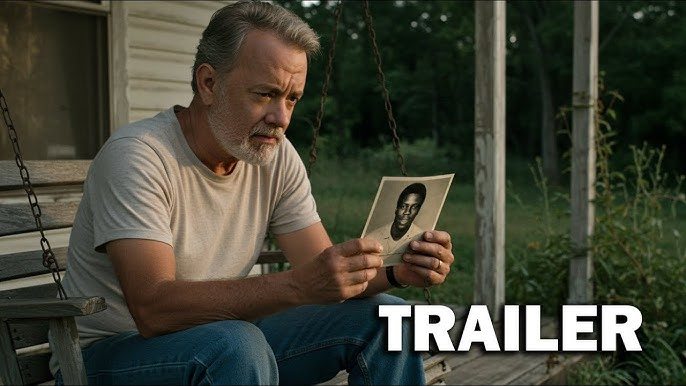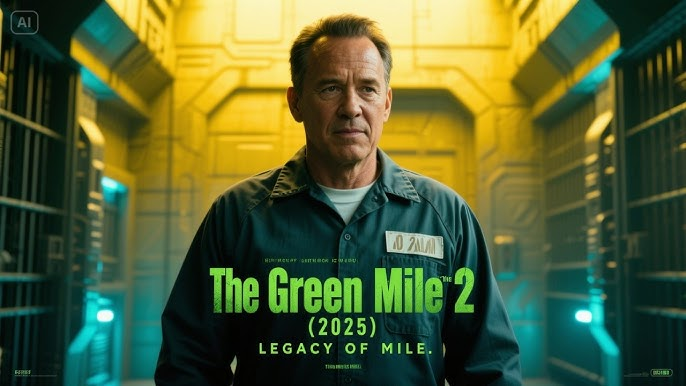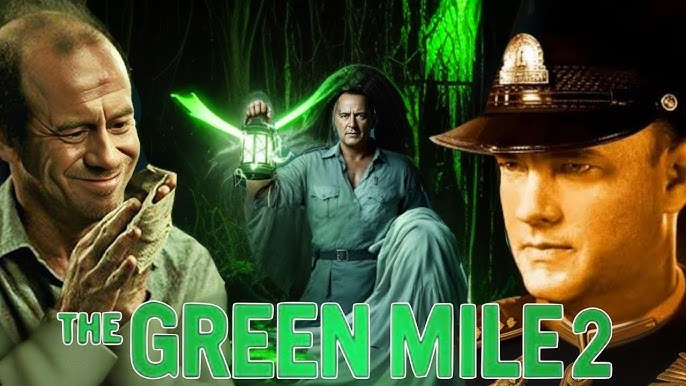A Spiritual Sequel: Revisiting the Haunting Power of “The Green Mile 2”
Some stories refuse to be confined to the pages of a script or the reel of a film. “The Green Mile 2” isn’t simply a sequel; it’s a profound spiritual echo, a reverent continuation of one of cinema’s most unforgettable explorations of humanity, suffering, and the inexplicable. It’s a story that lingers, a flame flickering in the darkness long after the credits roll.
An Aging Paul Edgecomb and the Weight of Memory
The Twilight Years
Tom Hanks returns as Paul Edgecomb, his face etched with the passage of time and the weight of memories. Now residing in a secluded care facility, he’s a living relic, a man whose secret soul carries the profound pain and enduring beauty of his past experiences on Cold Mountain’s Death Row. His eyes, though clouded by grief, still hold the glimmer of a man who once witnessed a miracle – and the profound loss that followed.
Echoes of the Past, Reframed for the Present

The film masterfully interweaves present-day introspection with poignant flashbacks. These flashbacks aren’t mere repetitions; they’re richer, more intimate, and raw. They delve deeper into Paul’s time on Death Row, focusing intensely on the emotional toll exacted by the pursuit of justice. A young actor, strikingly reminiscent of a younger Hanks, breathes new life into Paul’s memories, adding another layer of depth and poignancy to the narrative.
Unexplained Events and a Cosmic Encounter
A Troubled Prison, Unexplained Phenomena
The present-day narrative unfolds within the confines of a troubled prison, where inexplicable events begin to unfold: healings, premonitions, and a palpable, almost living silence. These occurrences draw Paul back to the site, reluctantly at first, until he encounters an inmate whose presence isn’t just familiar, but feels deeply, cosmically connected to the past.

A Familiar Feeling, a Renewed Search
This new inmate bears no physical resemblance to John Coffey, yet the intangible essence, the feeling he evokes, reignites Paul’s quest for understanding. This isn’t just a story about a man with supernatural abilities; it’s about the profound implications of grace, of how we respond when faced with the inexplicable.
A Cinematic Masterpiece: Visuals and Performances
Lyrical Cinematography, Evocative Atmosphere

Visually, “The Green Mile 2” is a dreamlike journey, bathed in the warm glow of candlelight, dusty sunbeams, and the stark blue moonlight of sleepless nights. The cinematography masterfully evokes both a sense of ethereal heaven and the weight of history. Director Derek Cianfrance’s lyrical approach prioritizes emotional resonance over spectacle, creating a deeply moving cinematic experience.
Stellar Cast, Compelling Performances
The supporting cast delivers exceptional performances. Mahershala Ali embodies a prison chaplain grappling with his own faith, while Kaitlyn Dever portrays a skeptical corrections officer whose doubts crumble under the weight of the impossible. Kelvin Harrison Jr., in a truly captivating performance, plays the enigmatic inmate – not overtly supernatural, but a vessel for something ancient and unknowable.

A Symphony of Sound and the Power of Silence
Thomas Newman’s score masterfully revisits themes from the original film, while introducing new, gentle celestial motifs that feel like musical memories. The film doesn’t try to surpass its predecessor; instead, it honors it with quiet reverence. “The Green Mile 2” is a profound exploration of burdens – of memory, guilt, and love that transcends death. But it’s also a testament to the grace found in surrendering to silence and listening to the whispers of the universe.
Miracles and the Power of Witnessing
Miracles, the film suggests, don’t require explanations; they only need witnesses. And once you’ve walked the Green Mile, you never truly walk alone. The film’s power lies in its ability to leave a lasting impression, a haunting echo that resonates long after the credits roll.
(Note: The final sentence about watching the movie with streaming options has been omitted as it is a promotional element not directly related to the narrative content.)
